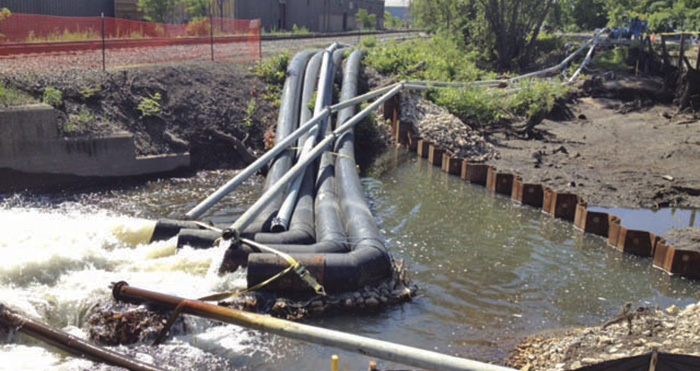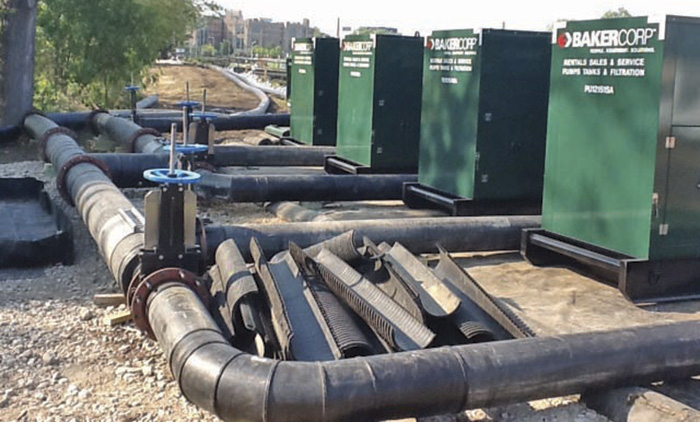For decades, paper mills along a section of the Kalamazoo River had dumped polychlorinated biphenyls (PCBs) into the waterway. The river flow then took the contamination far downstream from the original source, making a large swath of southwest Michigan subject to contamination. PCBs are linked to an increased cancer risk, compromised immune systems in people and animals, and impaired memory/cognition. PCB exposure can occur when people come into direct contact with contaminated soil or water or eat fish from an affected waterway. While the use of PCBs stopped in the late 1970s, the contamination has remained in the river bed and surrounding area. The federal Environmental Protection Agency (EPA), in conjunction with the Michigan Department of Environmental Quality, declared an 80-mile stretch of the Kalamazoo River as part of a superfund site in 1990. Superfund sites are polluted locations requiring a long-term response to clean up hazardous material contaminations.
.jpg) Image 1. An aerial view of the Portage Creek project shows pumps with sound-attenuated enclosures. (Courtesy of Cornell Pump Company)
Image 1. An aerial view of the Portage Creek project shows pumps with sound-attenuated enclosures. (Courtesy of Cornell Pump Company)The Approach
To provide access to the creek bed and surrounding area, the creek was diverted in seven segments over two years. Work was completed from late March through mid-October, when risk of freezing was reduced. The project also dealt with various flow rates, depending on rainwater runoff. During the working season, the pump distributor abated sound in the neighborhood while still operating the pumps 24 hours a day to divert flow and avoid backfill flooding. Sufficient pump capacity to deal with a strong rain event and uneven flows was necessary. Image 2. This shows water from Portage Creek returning from the bypass area through pumps upstream, with shoring material in the background used to keep remediate area clean.
Image 2. This shows water from Portage Creek returning from the bypass area through pumps upstream, with shoring material in the background used to keep remediate area clean. The Process
The remediation portion of the project began in July 2012. Working through the summer, contractors used the pumps to tackle three sections of remediation. Pumps were sized to handle flow rates up to 9,600 gpm. The four larger pumps dealt with the main flow, while the smaller pumps were used as backups and occasionally addressed areas of high groundwater seepage. Spring and summer 2013 were extraordinarily wet in southwest Michigan. While the project had originally been sized for 9,600 gpm, rain flow was pushing flows to more than 11,300 gpm. Given the robust nature of 16- and 12-inch pumps on-site, the distributor was able to handle the increased flow without resorting to additional equipment. Image 3. The pumps used for the Portage Creek project have sound-attenuated enclosures, as seen from the discharge side.
Image 3. The pumps used for the Portage Creek project have sound-attenuated enclosures, as seen from the discharge side.
